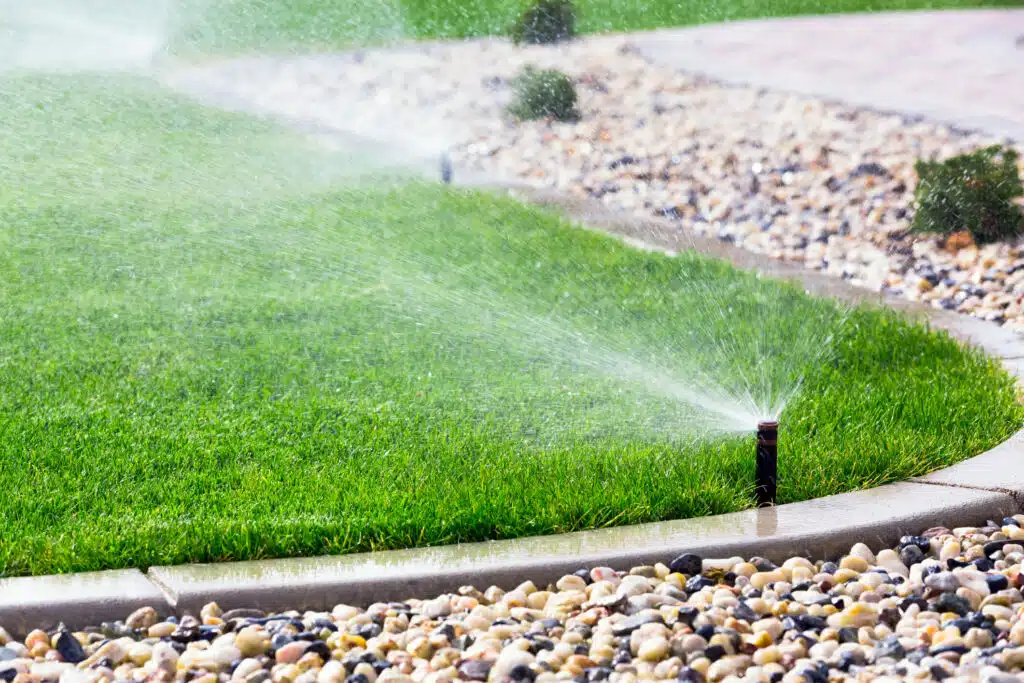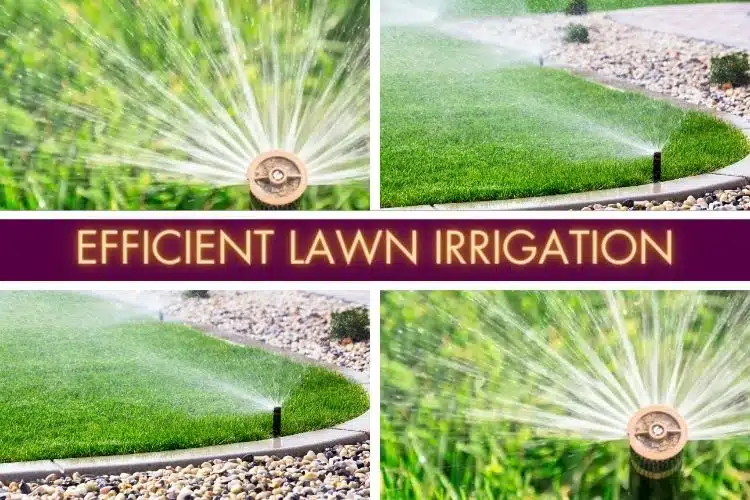A lush, green lawn is a sight to behold, but maintaining its vibrancy requires proper watering practices. Efficient lawn irrigation not only conserves water but also promotes healthier grass growth. Let’s dive into some of the best practices to ensure your lawn stays green while being eco-friendly.
Understand Your Lawn’s Needs

Different types of grass have different water requirements. Some grass types are drought-resistant and require less frequent watering, while others may need a good soak more often. Understanding your lawn’s specific needs can prevent overwatering or underwatering.
For instance, warm-season grasses like Celebration Bermuda or St. Augustine typically require less water than cool-season grasses like Kentucky bluegrass. Also, factors such as soil type and climate play a significant role in determining how much water your lawn needs. Sandy soils, for example, drain faster than clay soils and may require more frequent watering.
Water at the Right Time
The timing of watering your lawn can significantly impact its health and water efficiency. The best time to water your lawn is early in the morning, just before sunrise. During this time, the temperatures are cooler, and the winds are calmer, reducing evaporation loss.
Watering in the late afternoon or evening can leave lawns damp overnight, creating ideal conditions for fungus and other diseases. In contrast, watering during the heat of the day can lead to a significant amount of water loss through evaporation.
Deep, Infrequent Watering
Deep, infrequent watering promotes deeper root growth, making your lawn more resilient and drought-tolerant. Instead of watering a little bit every day, it’s better to give your lawn a good soak less frequently.
This practice encourages the grassroots to grow deeper in search of moisture, leading to a stronger, healthier lawn. As a rule of thumb, aim to water your lawn so that the moisture reaches about 6 to 8 inches deep into the soil.
Use Efficient Irrigation Systems

Not all irrigation systems are created equal when it comes to water efficiency. Sprinklers might be a popular choice, but they can often waste water due to evaporation and wind drift. On the other hand, drip irrigation or soaker hoses deliver water directly to the soil, minimizing evaporation.
These systems slowly release water over a long period, ensuring that the water is absorbed into the soil rather than pooling on the surface or running off. This method of watering is particularly useful in sloped areas where water runoff can be a problem.
Regularly Inspect and Maintain Your Irrigation System
A well-maintained irrigation system ensures efficient watering. Regularly inspect your system for leaks, broken lines, or misaligned sprinkler heads. Even a small leak can waste a significant amount of water over time.
Also, make sure your sprinklers are watering your lawn, not the sidewalk or driveway. Adjust the spray pattern and distance to ensure the water is being directed where it’s needed. If you’re looking for a smart irrigation system, be sure to get in touch with professionals like Heroes Lawn Care in Wylie, Texas, that will be able to regularly inspect and maintain it throughout the years.
Don’t Overwater
Overwatering not only wastes water but also makes your lawn susceptible to diseases and shallow root growth. If the soil is constantly saturated, air cannot reach the grassroots, leading to a weak and unhealthy lawn.
A good way to check if your lawn needs watering is to step on the grass. If it springs back up, it has enough moisture. If it stays flat, it’s time to water. Another method is to use a screwdriver or a soil probe to check soil moisture levels.
Adapt to the Weather
Adjust your watering schedule according to the weather. Your lawn needs more water in hot, dry weather and less during cooler months or periods of rainfall. If it’s been raining heavily, you can skip a few watering cycles until the soil begins to dry out.
Remember, the goal is to keep your lawn’s soil moist, not waterlogged. Over time, you’ll learn to intuitively understand your lawn’s water needs based on the weather and the condition of your lawn.
Conclusion
In conclusion, efficient lawn irrigation is a balance between meeting your lawn’s water needs and conserving water. By understanding your lawn’s needs, watering at the right time, practicing deep, infrequent watering, using efficient irrigation systems, maintaining your system, avoiding overwatering, and adapting to the weather, you can maintain a lush, healthy lawn while doing your part to conserve this precious resource.






